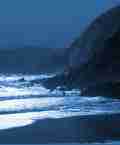 |

|
|||
|
Introduction to Irish Battles
...The Norman conquest of Ireland was not completed (as it had been with England from the eleventh century). The seat of the Bruce warfare of 1315-18 was the territory of the Anglo-Norman colony. Defeating the force of the east Ulster settlement near Antrim, Bruce marched southward as far as Ardee. Opposed there by a combined army made up of the forces of the English lordship and the Irish of Connacht, he fell back to the mouth of the river Bann near Coleraine, but later faced his opponents at Connor north of Lough Neagh, compelled their withdrawal and again marched southward to Kells. Here he defeated another Anglo-Norman force. Bruce spent the winter of 1315-16 in the midlands. He took Carrickfergus castle in 1316 and, joined by his brother, King Robert, marched in the following year to Dublin. But the Bruces considered Dublin too strong to attack; they turned away, and, burning and destroying in the settled areas which lay in their way, continued their march almost to Limerick. They retired thence to Ulster, and Robert returned to Scotland. In 13 I 8 Edward Bruce was defeated and killed at Faughart, near Dundalk, where he had been crowned king of Ireland two years previously. Such marching and fighting had not been seen before in Ireland. Two further battles of these years - Athenry, where the Anglo-Normans of Connacht under Bermingham, who was to be the victor of Faughart, defeated the last hope of his royal house, Felim O'Connor, and Dysert O'Dea, of which we shall have much to say later-heightened the militarism of a period that was to witness a notable decline in the fortunes of the English lordship. The two centuries which followed saw much bickering, much local strife and much destruction, but they saw no great battles. The English lordship contracted to the area around Dublin known as the English Pale. Outside of this, the towns, the number of which had been increased by the foundation of Galway, Carrick-fergus and a few minor places, continued to develop as English institutions, and the rulership of the remainder of the island was in the hands of many lords, Anglo-Irish and Gaelic. The most powerful of the former were the Fitzgerald Earls of Kildare and Desmond and the Butlers of Ormond, who exercised an almost independent control of the belt of original Norman penetration extending from the east of the central plain to Cork-the best land in Ireland-,-and the Burkes, who were still more independent and more Gaelicised, and who had made their own of the plains of Connacht. The most powerful of the latter were the lords of the periphery, those who had done most to withstand the Norman penetration, the O'Neills and O'Donnells in Ulster, the O'Briens in the present Co. Clare and the MacCarthys in west Munster. Power was very limited. The English lordship was on the defen-sive, and no lord, Anglo-Irish or Gaelic, could dominate the others. Still, the strongest force was Anglo-Irish rather than Gaelic. The greatest man in Ireland at the beginning of the sixteenth century was the Earl of Kildare, whose strength and limitation were disclosed in the greatest battle fought since the time of the Bruces, Knockdoe, which he won in 1504. Again, Knockdoe was peripheral. It was fought in Co. Galway, far from the centre of influence, and its result was no more than marginally decisive. The later battles assumed increasingly a wider significance, but again they were, as far as Ireland was concerned, mostly defensive. The conquest of Ireland was completed in the sixteenth century by the most powerful succession of English monarchs that had yet appeared, the Tudors, the shapers of the modem destinies of England. Rulers in an age which saw the birth of European power politics, the Tudors were constrained to complete the conquest of Ireland largely by their fear of the con-sequences of a possible intervention in Ireland of their continental enemies. The completion of the conquest meant the elimination of the local lordships, and, as far as Gaelic Ireland was concemed, the destruction of the native institutional system. This was fiercely resisted. It brought on, in the last decade of the sixteenth century, a war which was prolonged and widespread, a war in which, since it involved the movement and maintenance of large forces, and since the Irish, being without towns, were resilient, the nature of the terrain was a factor of the utmost significance. The war which Hugh O'Neill and his supporters waged against Queen Elizabeth I was primarily a struggle for the defence of Ulster, or, to view it from the English side, a long deferred penetration into that part of Ireland which had so far, and for so many reasons, escaped effective English attention. Its major engagements were, all save the last decisive one, fought in two areas, the approaches to the O'Neill and O'Donnell lordships from the south-east and south-west. This added to the already notable total of battles which were fought at either extremity of the northern province. While they fought in these areas the Ulstermen held the tactical initiative and brilliantly combined the new methods of the age of gunpowder and pikes with a utilisation of terrain that was traditional in the Irish wars; they were almost uniformly successful. When they came outside their province and, by marching to Kinsale in Co. Cork to co-operate with their newly arrived allies the Spaniards, accepted the hazards of a different kind of warfare, they were defeated. In this last struggle of the old Gaelic Ireland, terrain was vital; unfortunately for Hugh O'Neill, who had for so long made the difficult countryside of Ulster fight for him, the ground suited the English at the moment of decision. James I, who ascended to the throne in 1603, was the first king of a united Ireland, an Ireland which had been brought under unified control after centuries of compromise and conflict. He initiated a new period, one which proved to be a period of tran-sition. When the seventeenth century, the century of the Stuart kings, opened, the land of Ireland, in which lay the wealth of the country, was still very largely owned by long established pro-prietors, Gaelic and Anglo-Irish. When the century closed, the estates held by the descendants of these proprietors constituted much less than twenty per cent of the whole. Three confiscations, those of the Ulster from which Hugh O'Neill had fled in 1607, of Oliver Cromwell and of William III, had completely altered the structure of property holding and the basis of power. The new proprietors, who formed a new ascendancy under the altered government produced by the English revolution of 1641-89, were, outside Ulster, the victors and the beneficiaries of two wars. James 1's plantation of Ulster introduced a Protestant Anglo-Scottish element into the Irish population and led ulti-mately to the partitioning of Ireland into the territories of Northern Ireland and the Republic. The two seventeenth-century wars were, to speak of their immediate causes, the results of the English struggle which, as the American revolutionaries of a hundred years later were to recall, 'cost one king his head, another his throne'. The Irish Catholics who fought, as they claimed, for Charles I in 1641 and the years following, tried to secure an Irish solution of problems many of which were matters of contention in England and Scot-land as well, and the same element struggled again in 1689-91 to replace James II, a king whom the English had rejected. The altered, but still unsettled, state of Ireland was clearly shown in these seventeenth-century wars. They were no longer struggles of the frontier. Uneasily, but yet inevitably and irrevoc-ably, the old Gaelic and Anglo-Irish elements were coalescing; they were driven together in defence of their common Catholicism. The wars were now country-wide contests fought for causes that were-at least in 1641-52-complex and confused, but that stirred men throughout the four provinces. The whole island was, in Charles 1's time as in that of James II, the theatre of war. The importance of possession of Dublin was clearly marked. The victors in 1652 as in 1691 were those who possessed it; the really significant battles were those which were fought for its possession. Thus the victory of Owen Roe O'Neill at Benburb in Co. Tyrone in 1646 was as indecisive as that of Hugh O'Neill at the Yellow Ford in Co. Armagh in 1598. Both battles were peripheral, and although what happened on the periphery could prolong, it could not decide a contest. Dungan's Hill and Rathmines might, if their results had been different, have tipped the balance against the supporters of the English Parliament-although it is inconceiv-able that the Parliamentarians, having won in England, would accept less than victory in Ireland. The supporters of James II lost Dublin when they were defeated at the Boyne, and if they were to win their war they would have to take Dublin again. Similarly, if Hugh O'Neill and the Spaniards had won at Kinsale they would still have had to take Dublin before O'Neill could have made a reality of what Sir Robert Cecil, Queen Elizabeth's minister, had called Utopia-a Catholic Ireland ruled by Irish-men. In these wars of a wider scope the river Shannon assumes a new military significance. In Ireland as elsewhere in the wars of the past, the rivers were the real obstacles, and in Ireland parti-cularly the bogs, rather than the mountains, were the fastnesses. The bogs, because of the climate and the terrain, were everywhere. But the river Shannon, as was seen in the campaigns of 1690 and 1691, was the major barrier. The battles of the war of the Catholic Confederation were fought in Munster, Leinster and Ulster and the Shannon had little place in the military movements of that time, but the fact that the army which had been defeated at the Boyne in 1690 could retire behind the Shannon, and could deny a passage of that river to King William's forces, postponed the Jacobite defeat. As the centuries advanced too the Irish wars assumed increas-ingly an international complexion. The English fought at Kinsale in 1601 as much to repel a Spanish invasion as to put down an Irish revolt. The Catholic Confederates, although they gained little by it, were represented at the Catholic courts of Europe. There were French troops at the Boyne, a French general com-manded':-and lost his life-at Aughrim, and the whole contest between Kings William and James was a phase of a great Euro-pean struggle to uphold and to overthrow the ascendancy of France. In the last of the Irish military struggles before the twentieth century-the rebellion of 1798-the government was more fearful of a French invasion than it was of a popular uprising, and a greater concentration of troops was brought about by the landing of a French force in Co. Mayo than by the revolt of the people in Co. Wexford. The Introduction continues here
Taken from the Introduction to Irish Battles by G.A. Hayes-McCoy, published by Appletree Press.
|
[ Back to top ]
All Material © 1999-2009 Irelandseye.com and contributors
